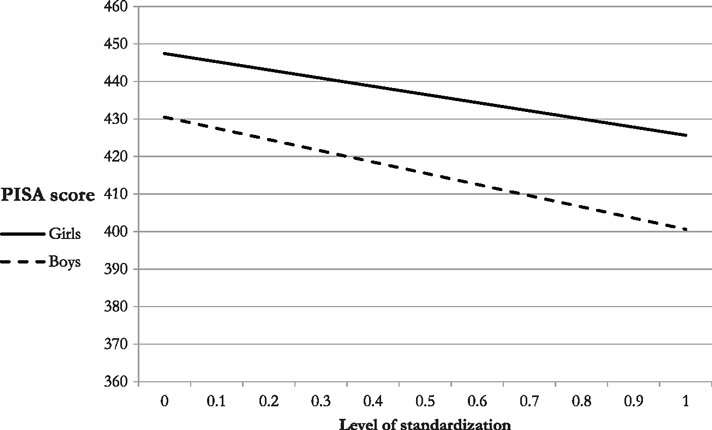The less flexible the teaching, the more poorly boys read

Standardised education has a more negative influence on the reading performance of boys than on that of girls. This was shown in a study done among almost 1.5 million 15-year-olds in 37 countries. In all of those countries, boys read more poorly than girls. The results of the study by sociologists Margriet van Hek and Gerbert Kraaykamp of Radboud University and Claudia Buchmann of Ohio State University were published on 27 January in the European Sociological Review.
Van Hek: "Until now there had been relatively little research on the difference in language skills between boys and girls. However, it is a very interesting topic to study, partly because language skills are so important as a basis for schooling. Our study was an attempt to gain more insight into the causes of why boys do more poorly at school." The study showed that boys in all of the countries studied read more poorly than girls. Van Hek: "And it hasn't improved in recent years. In fact, it's gotten worse."
Standardised education
In their study, Van Hek, Kraaykamp and Buchmann show that the structure of the education system influences the differences in reading performance by boys and girls. The less freedom that teachers and schools have to design their own teaching methods, the worse their pupils perform, especially boys. So the more standardised the education in a country becomes, the bigger the differences in reading performance by boys and girls.
The researchers found the biggest difference between the sexes in Bulgaria, where education is very strictly standardised. The smallest difference was in Chile, where there is a lot of freedom to adjust teaching to the individual student. In the Netherlands the difference between boys and girls is also relatively small and the freedom for schools and teachers relatively large.
Select level of education later
In addition, girls profit when pupils are channelled into higher and lower educational levels at a later age. In the Netherlands we make this selection very early, when pupils are 12, which results in a relatively small difference between the sexes in reading performance. In countries where the selection is made later, girls have an even bigger lead in reading performance.
There are also differences between girls and boys in maths skills. Here again, girls profit from a later selection. However, it appeared that an individual, custom-made approach in teaching had no influence on the difference between the maths skills of girls and boys. Van Hek: "Our explanation is that, in contrast to language, maths is considered something for boys so it doesn't seem necessary to adjust teaching maths skills to their individual needs."
For their study, Van Hek, Kraaykamp and Buchmann consulted research data on almost 1.5 million young people in 37 countries between 2000 and 2015. They examined these pupils' results on reading and maths tests, and their research on school directors gave insight into the extent of freedom and customised work when designing a school's education plans.
More information: Margriet van Hek et al. Educational Systems and Gender Differences in Reading: A Comparative Multilevel Analysis, European Sociological Review (2019). DOI: 10.1093/esr/jcy054
Provided by Radboud University




















